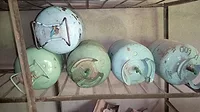Rainwater harvesting system: what plumbing and mechanical contractors needs to know
Congratulations! You are going to be installing a rainwater harvesting system as part of your mechanical contracting scope. Do you know exactly what you are getting? Is the system conceived as a whole or a collection of disparate parts? Will you purchase the components from multiple vendors or from a single source? For that matter, what does the “entire system” mean? These answers may not be apparent at the time of bid submission but you will need to know them in order to have a successful conclusion to the project.
Rainwater harvesting systems are showing up in increasing numbers of commercial projects, especially when the end uses are for indoor nonpotable applications, such as toilet flushing and cooling towers. Many mechanical contractors are first-timers at installing rainwater systems and they face a number of new challenges.
It is fundamental that the contractor understands what he is buying, how it works in concept and, most importantly, where the scope of work begins and ends. I’ll give you the information that can put you ahead of the game, and save you headaches, money and time.
Defining a 'system'
Unfortunately, there is no one universally agreed upon definition for a rainwater harvesting system. Rainwater is natural precipitation that has not been previously put to use. It is not to be confused with graywater, which is wastewater derived from sink and shower drains. In addition, graywater requires higher levels of treatment and processing than rainwater collected from clean roof surfaces.
A considerable amount of interpretation is involved when defining what a rainwater collection system is. For some, it is only the pumping component. For others, a rainwater system is the filtration/treatment portion. In some instances, it refers to the prefiltration and storage aspects, with the pumps, controls and related electronics left to others. You need to know how the rainwater system is defined for your project.
For the purposes of this article, we define a rainwater system as all the elements from the inlet prefilter to the pressurized outlet leading to the final application. The primary elements of a rainwater harvesting system are:
- Collection surface, roof drains and piping.Water quality is largely dependent on the collection surface type. Remember that rain does not equal rainwater. Once rain hits a surface, it will pick up the constituent contaminants as it flows off the collection surface.
- Inlet prefilter.This is a device intended to keep larger debris from entering the cistern. An inlet prefilter may consist of multiple units or a single manifolded unit upstream of the storage tank or cistern.
- Storage vessel.The tank or cistern (above or below ground) is generally constructed of varying materials such as fiberglass-reinforced plastic, plastic (polypropylene or polyethylene), concrete, metal or a flexible liner. The storage tank can be either part of the structure of the building or a separate self-contained unit.
- Pressurized pumping, treating and filtering systems.These are the components related to pressurizing and treating the water suitable for the application, including all the associated and necessary controls, pumps, wires, pipe, disinfecting devices and filters.
- Peripheral elements.Components such as pumps, solenoid valves, three-way valves, expansion tanks, etc., will require separate feeds, conduits and disconnects. Determine all the plumbing and electrical interconnections in the system and account for their associated material and installation costs.
A rainwater harvesting system is a collection of components (big and small) that must work in perfect harmony if it is to be a permanent part of a building’s infrastructure.
Details before design
Locating the rainwater system in the plans and specs may not be obvious. Look for a flow schematic showing all the major elements of the system in the plumbing sheets. Accompanying this schematic should be a written sequence of operations. All plumbing and electrical connections to and from the various parts of the system should be clearly visible — i.e., pumps, remote valves (solenoid and manual), expansion and/or buffer tanks.
This diagram should portray the design intent and scope of the rainwater harvesting system. It is an easy-to-read picture of how the rainwater flows through the entire system from the collection surface to the end use.
Identify all the storm risers related to the rainwater system, piping to the final applications, various overflows and the floor drains. You may need to search for these details on separate sheets and in different sections. There may be redundant or conflicting information between the sections. Do not leave anything to chance. A Request for Information sent out early in the game goes a long way.
Look for the section in the specifications detailing the rainwater system. Although all the information pertaining to the system should be referenced here, in the real world this is frequently not the case. Check for additional references in the specifications that impact the material selection and bypass strategies. Be clear as to what is designed and what is in your scope of work.
Rainwater designers with no prior experience in the rainwater industry frequently “reinvent the wheel” during the design phase and are prone to designing systems that may not be optimal.
You should have a clear understanding of what constitutes the whole system as well as what you will provide in your bid. The omission of certain elements in a design, even when outside of the scope of your bid, may significantly impact your rainwater system’s performance.
For example, if there is no inlet prefilter, the water quality in the cistern may be compromised such that the filtering/treating equipment is unable to process the water. You may have to explain to the owner why the system is not able to produce suitable water quality. Take the time to note these omissions and have it documented.
Much of the information provided to you during the submittal process may be new. Review the submittal documents and ask questions whenever in doubt. If you are soliciting bids from single-source providers, confirm the proposals match the plans and specs as closely as possible.
A system or a group of parts?
When the system is conceived as a whole and purchased from one vendor, there should be less finger-pointing. If you go this route, purchase the system from a reliable manufacturer who provides startup, owner training, warranty and aftercare. Purchasing the components separately can be much more complex.
Finding the right system provider with the knowledge, expertise, experience and longevity in the business is probably your best insurance against failure, especially when putting in your first system.
Unfortunately, due to the relatively young age of the rainwater industry, designs lack consistency and exhibit a staggeringly wide degree of variation. As varied as the designs are, so are the levels of competency in installation, maintenance and repair. Do your due diligence. A booster pump company may have expertise in pumping water but may be unfamiliar with filtering and treating rainwater. Similarly, a filter vendor can tell you what his company’s filter can do, but may offer you nothing when asked how this equipment interacts with other parts of the rainwater system, especially the gravity-fed portion upstream of the primary storage.
You must have a solid understanding of the overall operation of the system and know what the intended applications are. In addition, you need to know:
- Collection surfaces type and area. Water collected from different surfaces will have differing water constituent pollutants, such as grit, dust, bird droppings, oils and hydrocarbons (from parking and driving surfaces). For example, green roofs may output fertilizer residues, tannins and other dissolved solids that are extremely hard to remove. This may leave the owner dissatisfied with the water quality, especially when this water is intended for a cooling tower and/or toilets. The area affects the volume and velocity for a given storm event.
- Flow and pressure requirements for the applications. Unless the rainwater system manufacturer will be responsible for the plumbing design in the building, it needs to provide the output flow and pressure at the point of exiting the system. The designing engineer needs to take into account the pressure losses in the building so enough pressure exists for the farthest fixture. The rainwater system provider should be able to calculate the pressure losses across the various components of the system to the connection point of the building’s plumbing system.
In many cases the installing contractor will be dealing with more than one trade on the jobsite and possibly more than one designing engineer (i.e., civil and mechanical). Associated trades typically include electrical, controls/building automation, site and roofing contractors. Coordination is key.
For example, will you have multiple feeds to a variety of skids/components or a dedicated power supply to a single skid fed by a dedicated circuit? You need to know the voltage and amperage required for the entire system. Do not leave this to the last minute. You could get blamed for not letting the electrician know of the fully loaded amps required for the system. Often the control panel will need more amps than the combined amperage needs of the all the pumps. It is much harder to ask for an additional power feed after the fact.
Conduct regular offsite and onsite meetings with all involved (including the system manufacturer) and develop a simple game plan with timetables and deadlines. Everyone involved needs to understand what needs to be done and when it needs to get done. If this sounds like Project Management 101, it is. Rainwater systems are new to the construction world and require extra degrees of planning and communication. More communication is better than less. Phone calls are essential between parties. Do not rely on emails alone.
Although the main codes and standards developing organizations — IAPMO, ICC, ASPE, etc. — have made great strides in updating plumbing codes with provisions for rainwater harvesting, unfamiliarity with these provisions keeps the industry from growing at a faster pace. In some states, laws related to water rights actually prohibit the collection of rainwater from roofs. Despite this, the collection of rainwater throughout the United States and Canada encounter significantly fewer barriers today than even five years ago. Check with your local and state codes to be safe.
As water is perceived as a more and more valuable resource, a proliferation of rainwater systems will be installed in the built environment. Successful projects are based on systems-based designs coupled with competent installations. Make no mistake, rainwater collection systems are here to stay and chances are you will be bidding on one soon. Developing expertise in this field will come with experience, but doing some homework ahead of your first rainwater job will put you ahead of the competition.
This article was originally titled "Harvesting rainwater" in the November 2015 print edition of Plumbing & Mechanical.
Looking for a reprint of this article?
From high-res PDFs to custom plaques, order your copy today!





